For artisans and enthusiasts in the world of ceramics, the quest for unique and naturally sourced materials is a constant journey. At rockscapes.net, we delve into the geological wonders that can inspire and transform creative practices. Today, we explore Basalt Rock, a common volcanic rock, and its fascinating potential in crafting distinctive ceramic glazes. This exploration began with a personal quest to incorporate volcanic elements into my glaze recipes, leading to an exciting discovery of iridescent effects hidden within basalt.
My journey started with an invitation from geology expert Doug Jones to explore the basalt quarries just across the Idaho border. The initial aim was to search for Xenoliths – ancient mantle rocks brought to the surface by volcanic eruptions. However, amidst this geological treasure hunt, I stumbled upon something equally captivating: iridescent vesicular basalt.
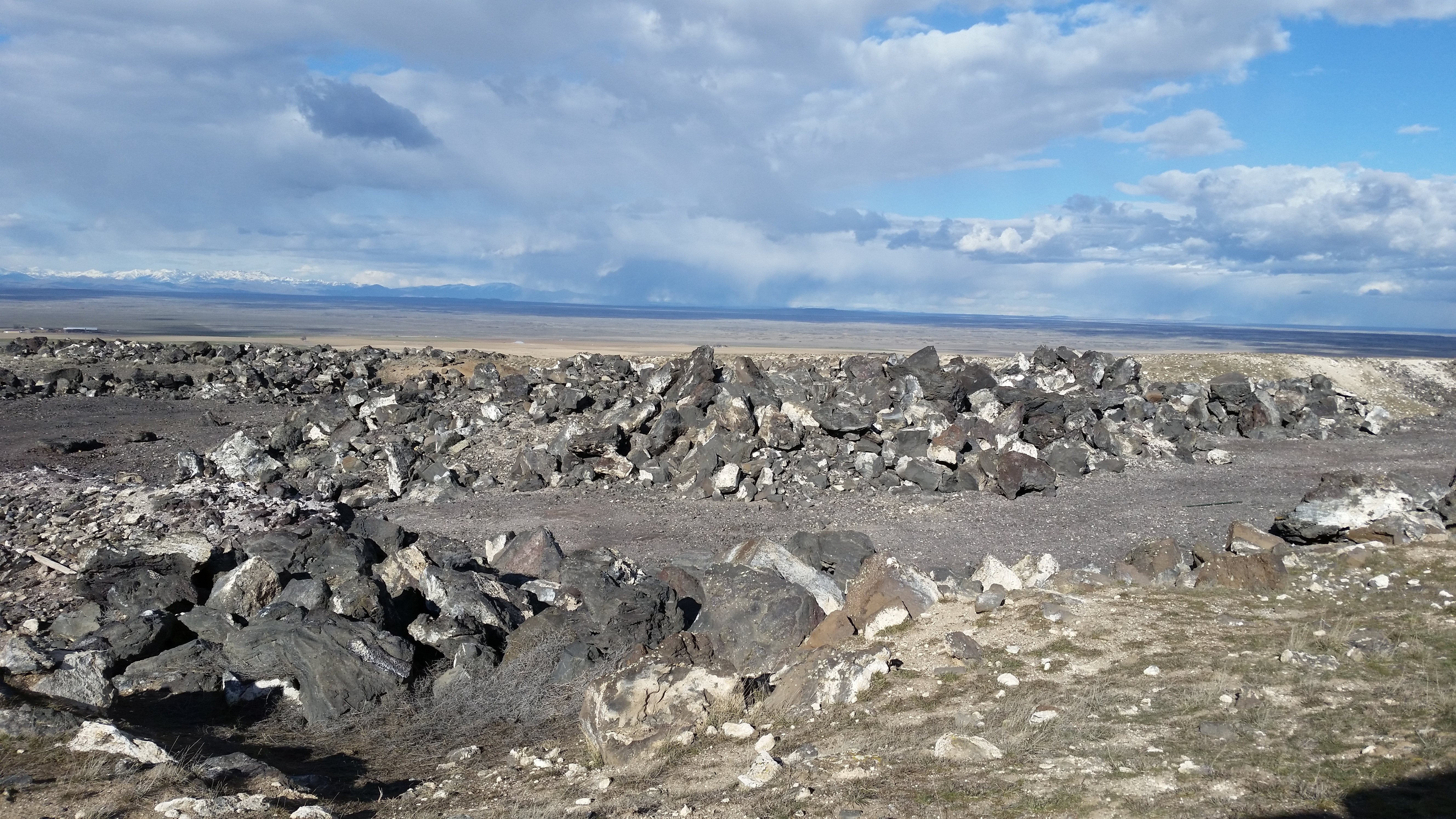 Open pit basalt quarry in Idaho, showcasing the dark volcanic rock and excavation equipment
Open pit basalt quarry in Idaho, showcasing the dark volcanic rock and excavation equipment
Understanding Vesicular Basalt: The Frothy Foundation
Vesicular basalt is easily recognizable by its porous, bubbly texture, a result of gases escaping as the lava cools and solidifies. Think of the classic red lava rock used in landscaping – that’s vesicular basalt. This unique structure plays a crucial role in its properties when used in glazes.
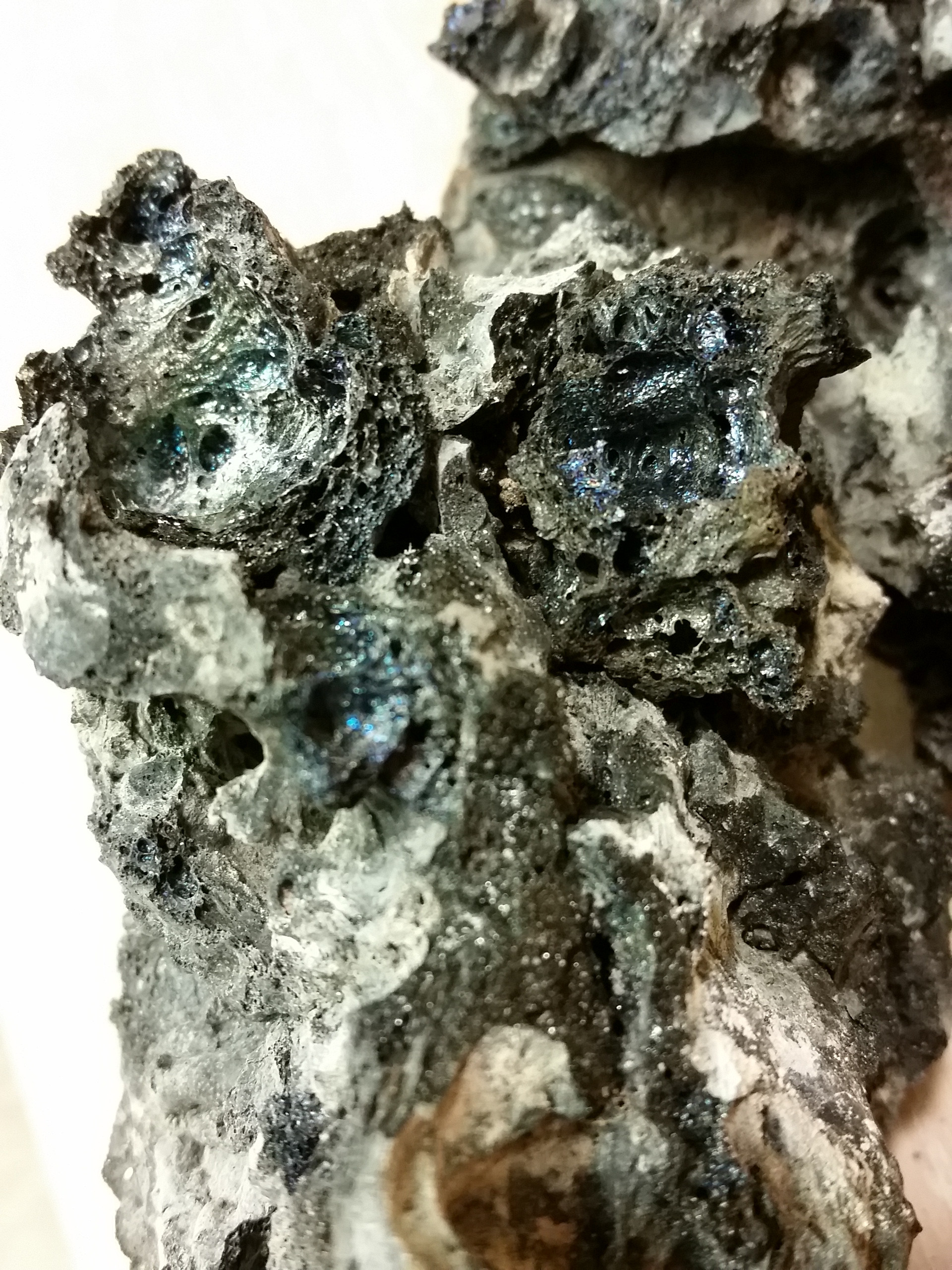 Close-up of vesicular basalt rock, highlighting its bubbly and porous texture
Close-up of vesicular basalt rock, highlighting its bubbly and porous texture
During our expedition, while searching for Xenoliths, I collected a substantial amount of this intriguing vesicular basalt. Alongside this, we successfully located around 40 Xenoliths and other geological specimens, making the trip a rich haul for both geological and ceramic interests. Among the finds were pieces of basalt showcasing quartz clusters, further highlighting the diverse mineral compositions within this volcanic rock.
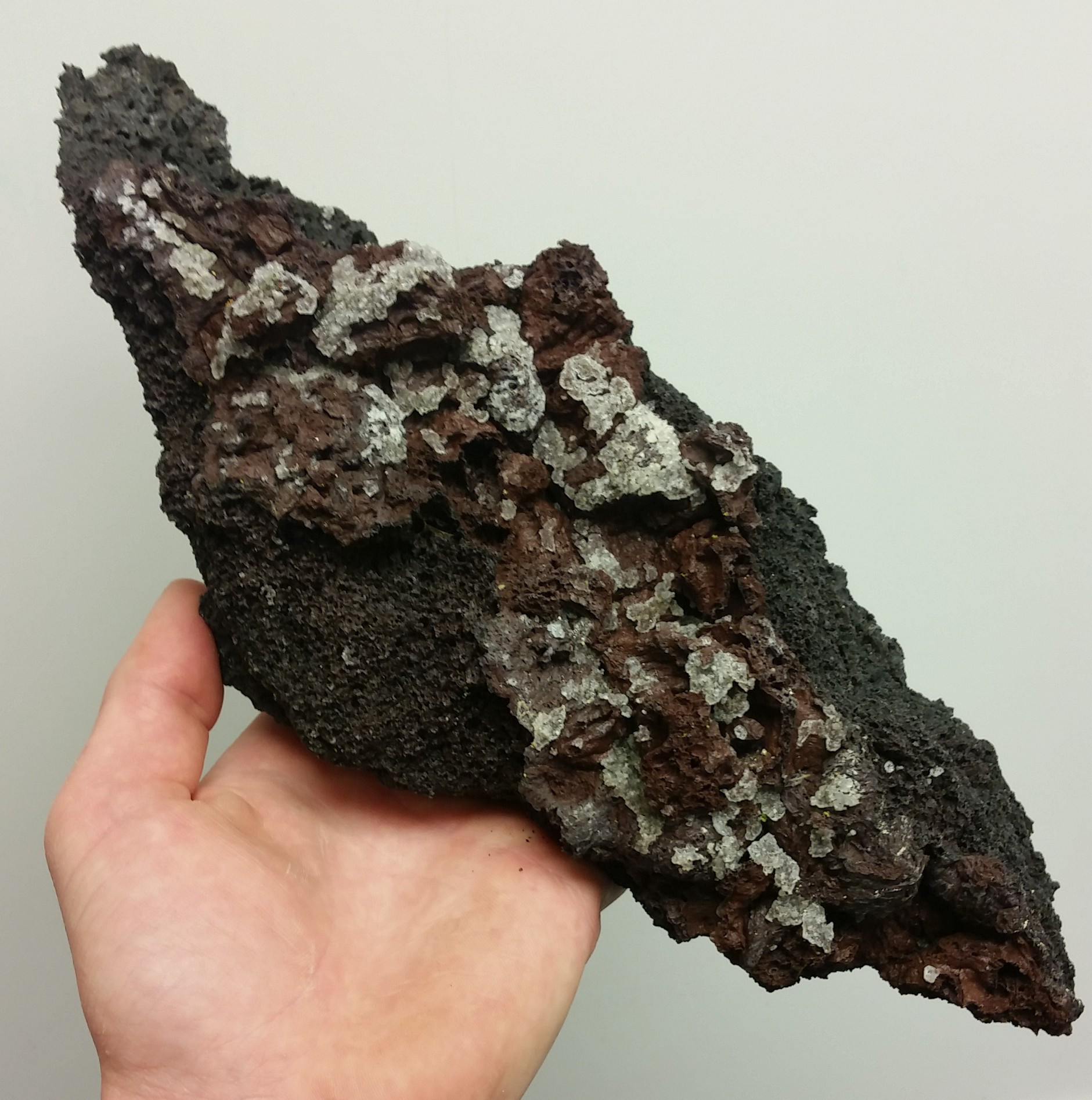 Basalt sample featuring crystalline quartz clusters, demonstrating mineral diversity
Basalt sample featuring crystalline quartz clusters, demonstrating mineral diversity
Testing Basalt’s Potential as a Ceramic Glaze
Back in the studio, the crucial question arose: could this raw basalt actually function as a viable glaze material? My standard approach is straightforward: break off a small sample, place it in a dish, and subject it to a kiln firing.
 Small basalt rock samples prepared for firing tests in ceramic dishes
Small basalt rock samples prepared for firing tests in ceramic dishes
The basalt samples underwent firing in both cone 10 reduction and cone 10 oxidation kilns. The results were undeniably promising, indicating the basalt’s potential as a valuable glaze component.
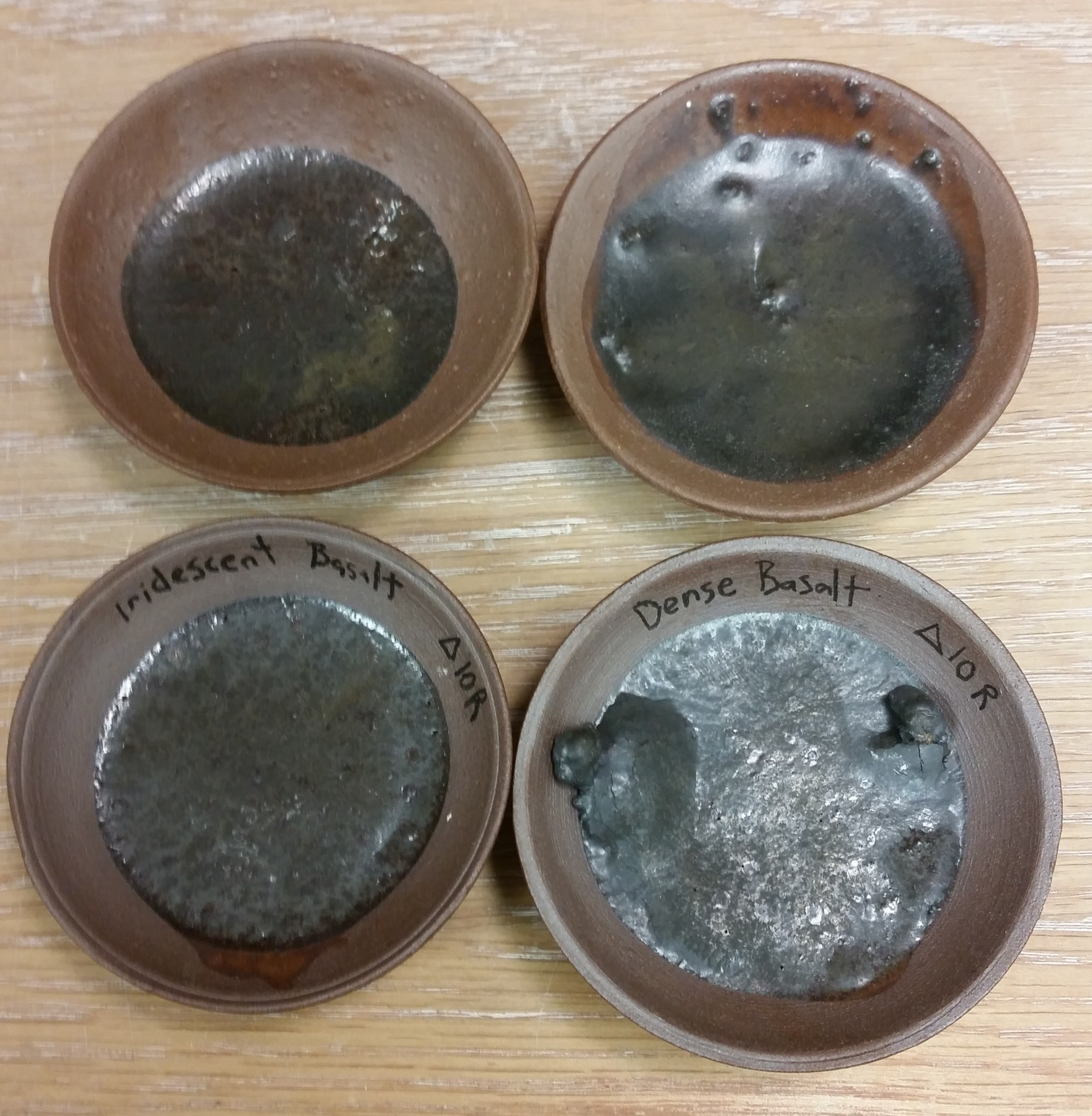 Fired basalt samples showing glaze-like melting and surface transformation after kiln firing
Fired basalt samples showing glaze-like melting and surface transformation after kiln firing
From Basalt Boulders to Fine Glaze Material: The Processing Journey
With the viability confirmed, the labor-intensive process of transforming raw basalt boulders into usable glaze material began. Initially, the boulders were broken down into gravel-sized fragments. These fragments were then processed in a ball mill. While using intermediate crushing equipment could have expedited the milling, I opted for a prolonged ball milling process, running for approximately 24 hours at a time. This involved sieving out the fine material, adding more coarse basalt, and repeating the cycle over four days. This method, while time-consuming, efficiently processed all the basalt, resulting in finely milled lava rock.
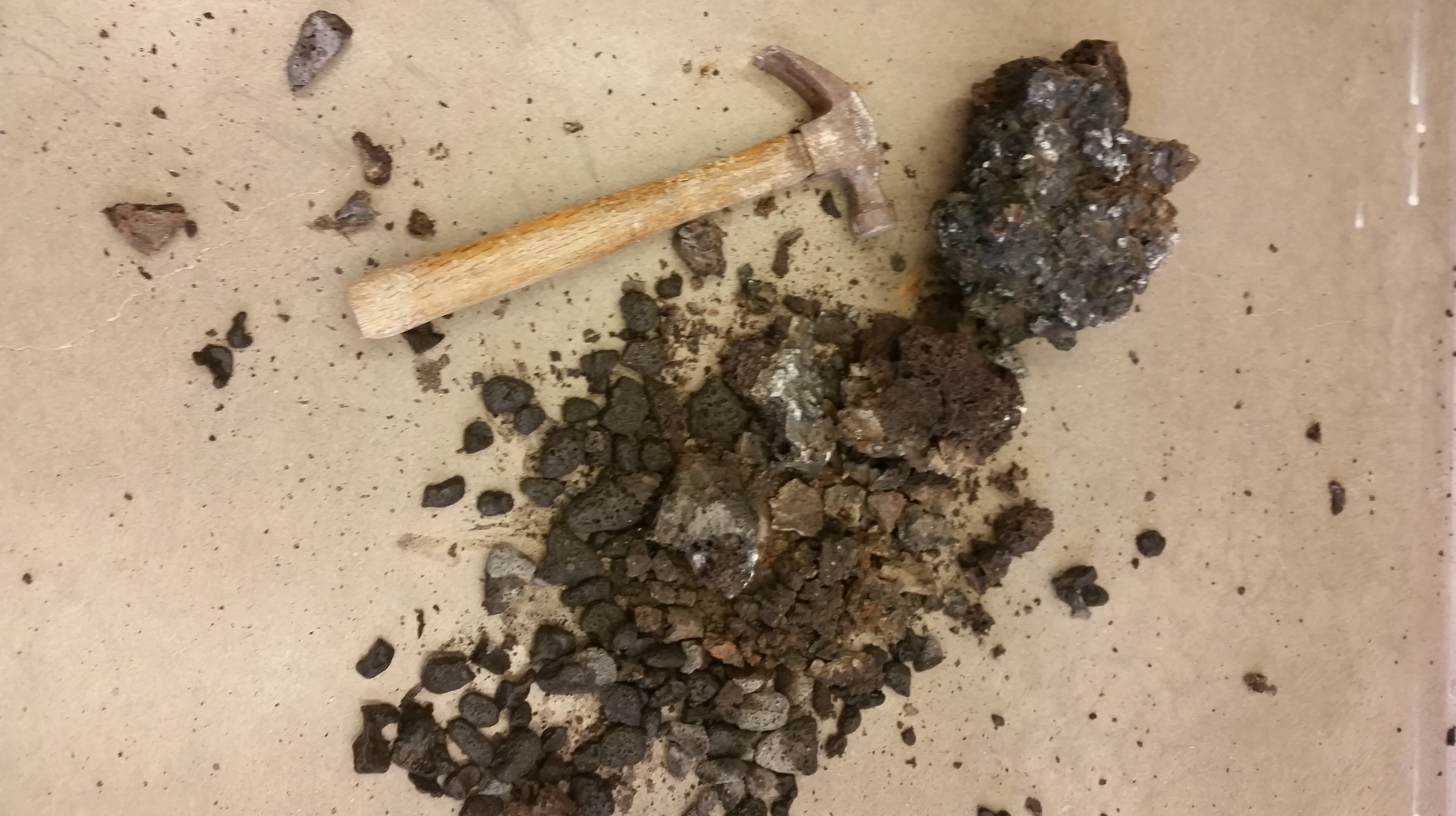 Pile of tumbled lava rock, the result of initial basalt processing for glaze making
Pile of tumbled lava rock, the result of initial basalt processing for glaze making
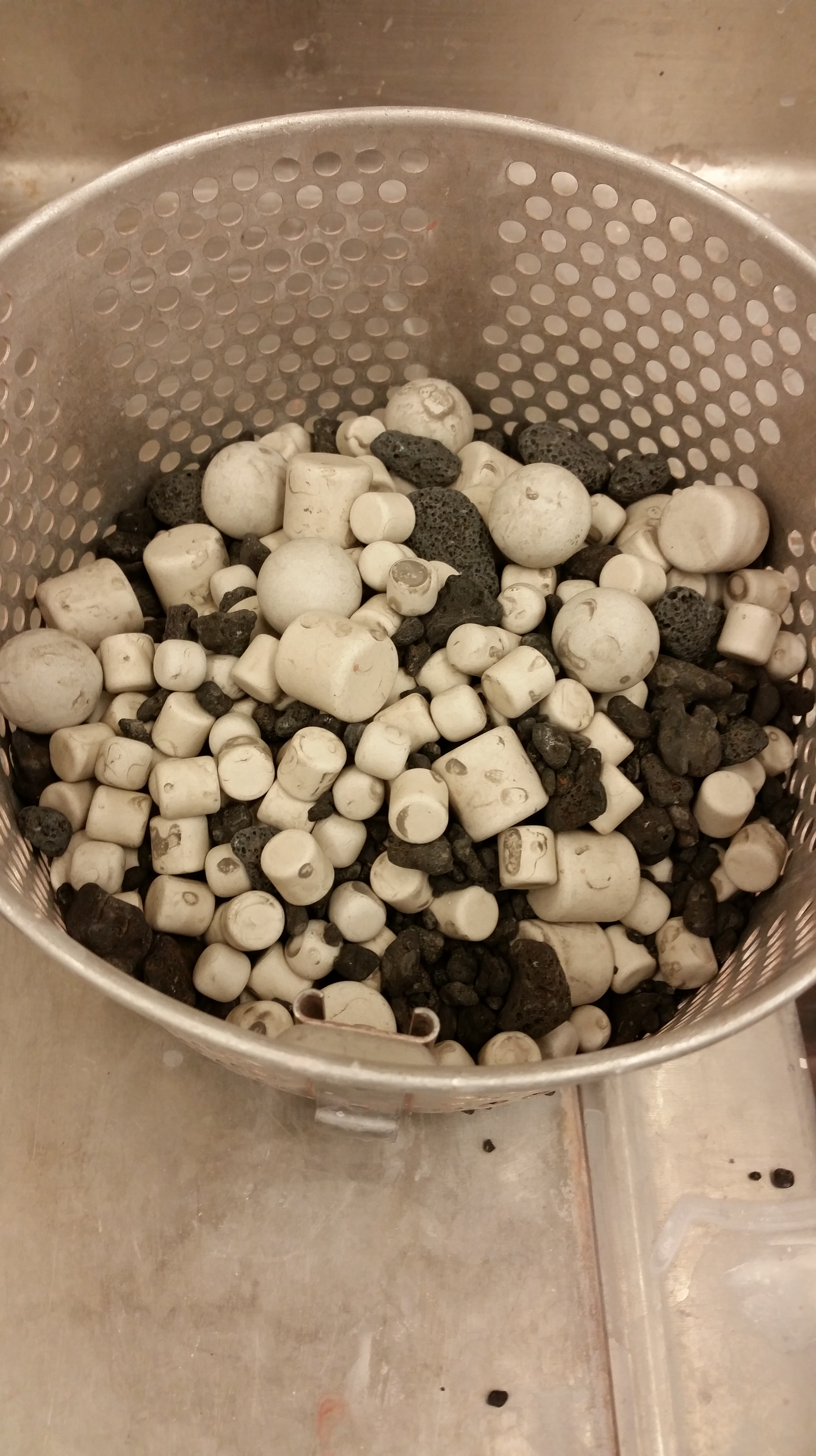 Ball mill containing larger basalt pieces mixed with porcelain milling media for fine grinding
Ball mill containing larger basalt pieces mixed with porcelain milling media for fine grinding
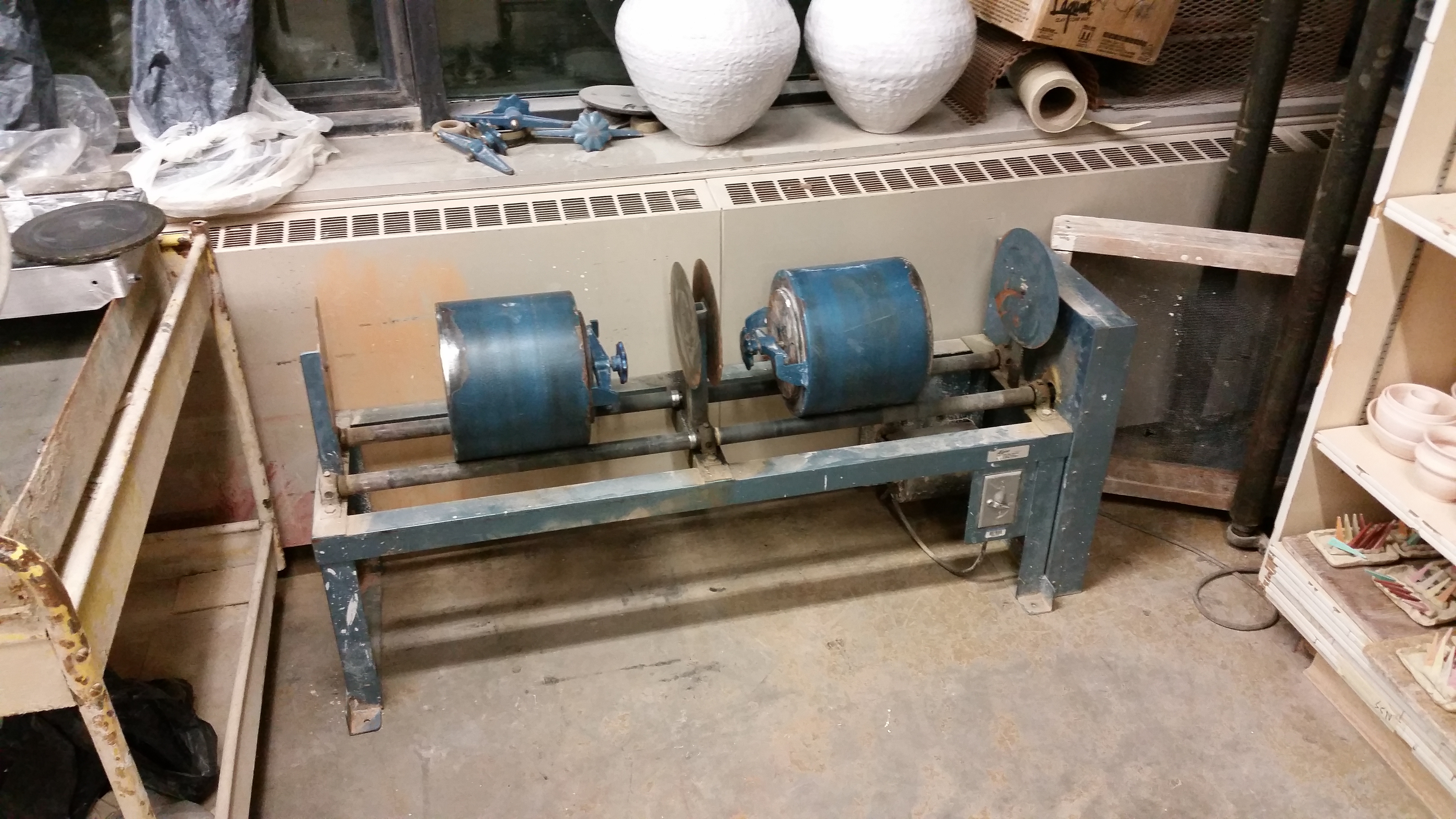 Close-up inside a ball mill showing basalt and porcelain media during the grinding process
Close-up inside a ball mill showing basalt and porcelain media during the grinding process
The milled basalt material, fine enough to pass through a 100-mesh sieve, was then allowed to settle. Excess water was decanted daily until the mixture thickened, achieving a glaze-like consistency. The ball milling process ensured exceptionally fine particles, which remained well-suspended in the glaze.
Revealing Iridescence: Firing Basalt Glaze
The next crucial step was to test this basalt glaze material in the kiln. The results were more than satisfactory.
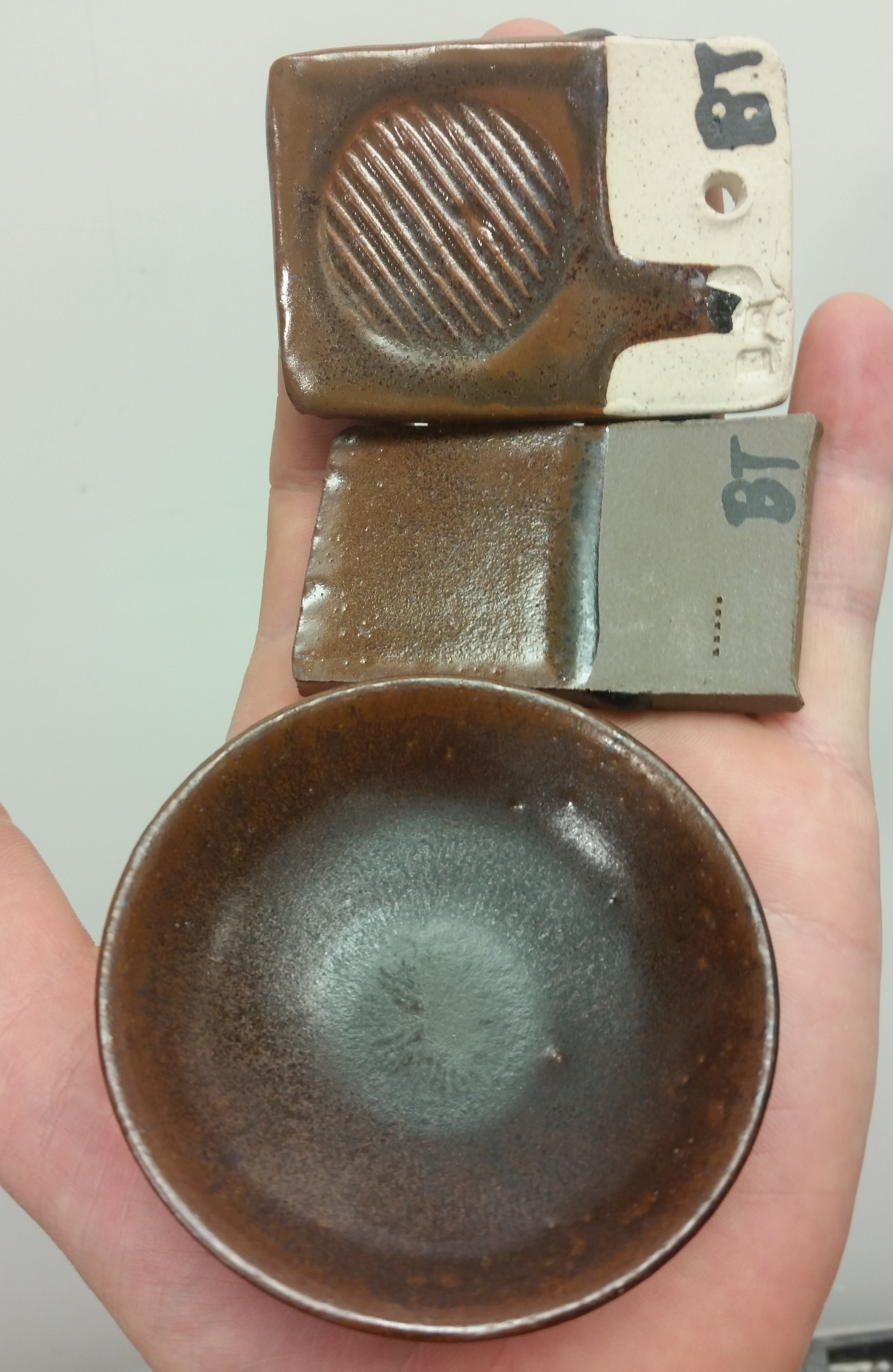 Basalt glaze sample fired to 1250°C in a reduction kiln, showing its melted and vitrified state
Basalt glaze sample fired to 1250°C in a reduction kiln, showing its melted and vitrified state
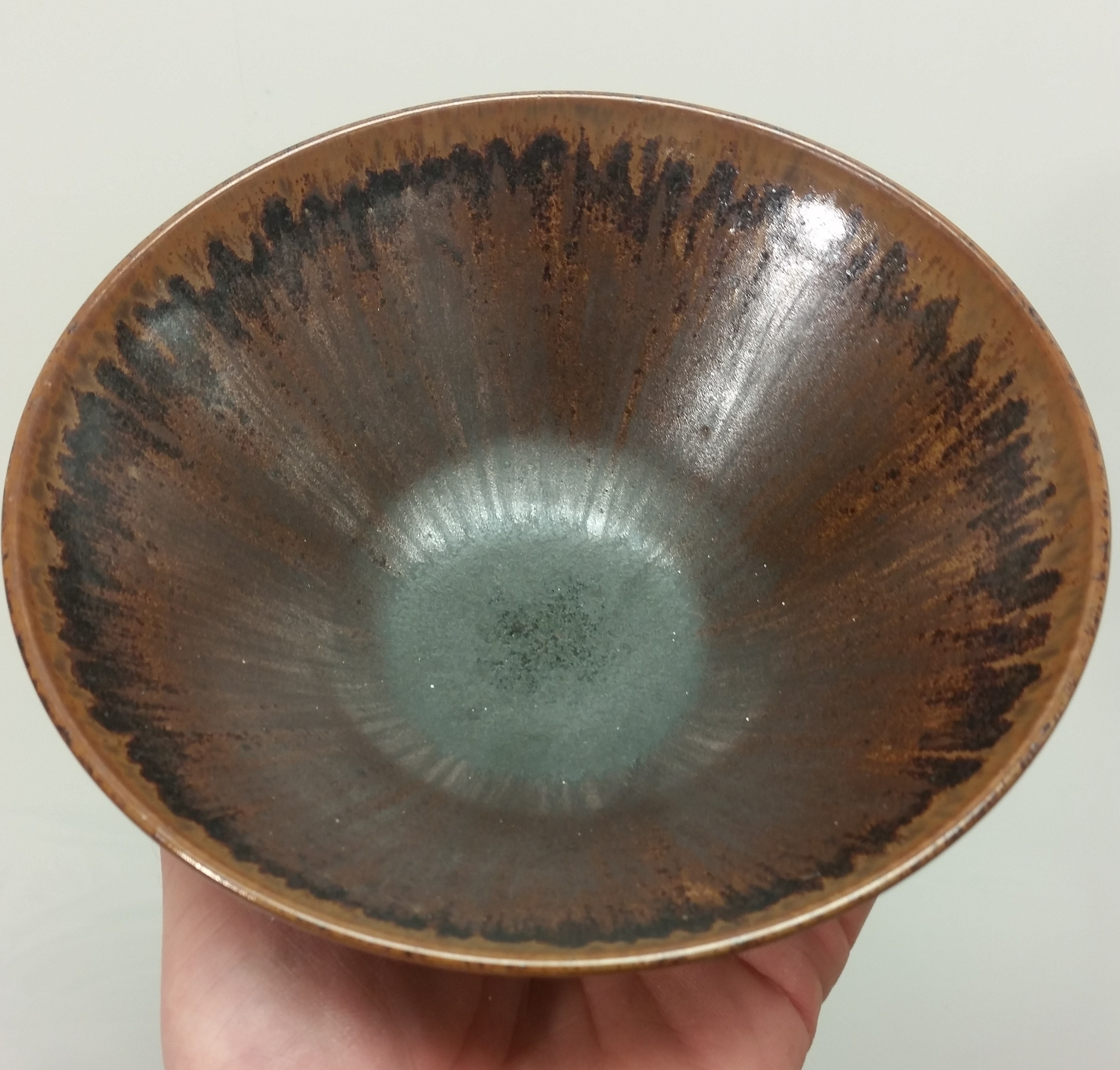 100% basalt glaze on porcelain, fired to 1265°C in an oxidation kiln, displaying a smooth, glossy surface
100% basalt glaze on porcelain, fired to 1265°C in an oxidation kiln, displaying a smooth, glossy surface
Knowing the glaze was viable, I proceeded to experiment with unconventional firing cycles, specifically a reduction cool cycle. Inspired by previous successes in creating unique ceramic surfaces through reduction cooling and temperature holds, I aimed to replicate conditions conducive to iridescent phenomena. Geological information indicated basalt solidifies around 980°C, so the kiln was crash-cooled to this temperature and held in a reduced atmosphere, encouraging metallic compounds to crystallize. The hypothesis was to recreate conditions that might naturally produce iridescence.
The Stunning Outcome: Iridescent Basalt Glazes
The outcome was truly remarkable. The firing process yielded iridescent effects, strikingly similar to those seen in Raku or Lustre firings, yet fundamentally different in origin.
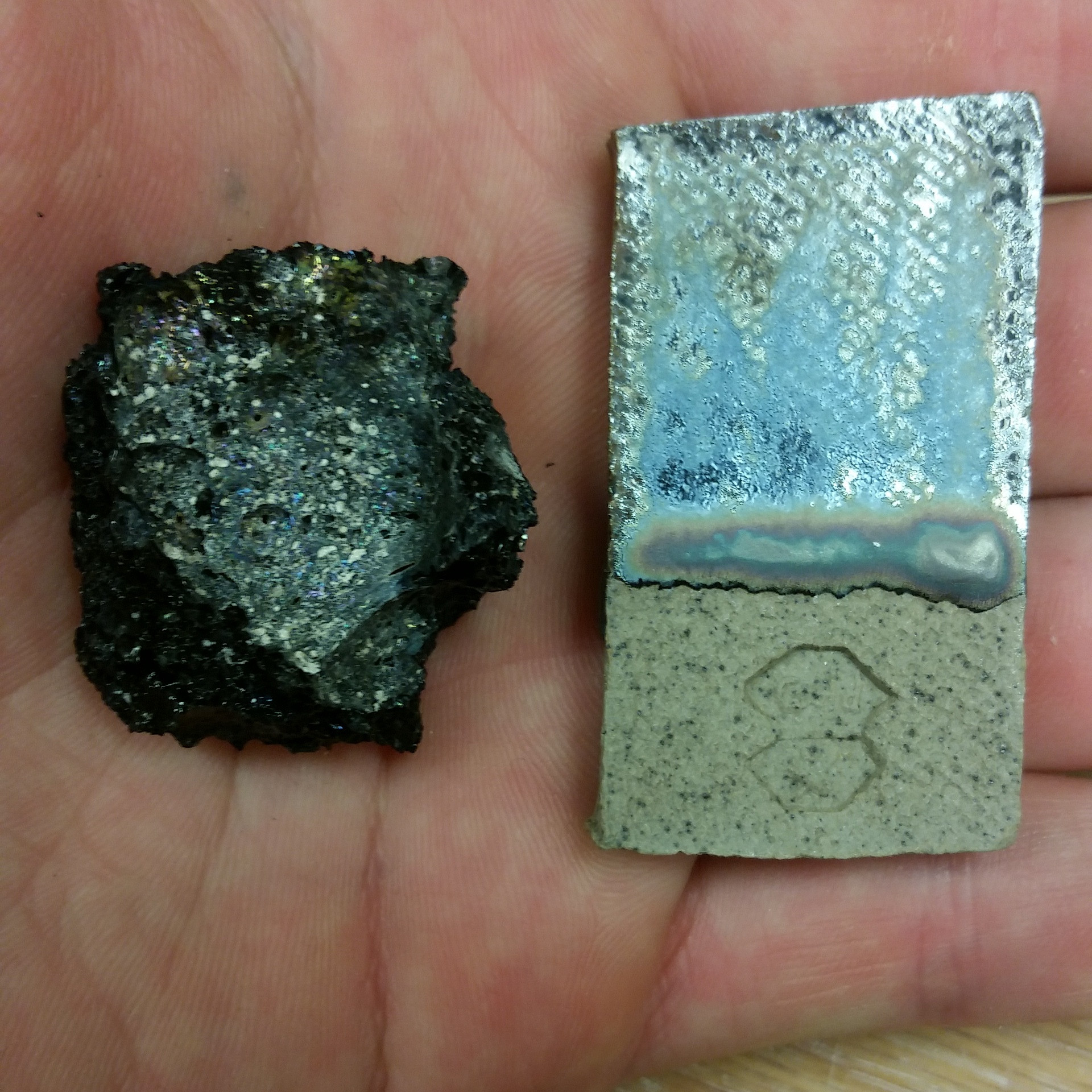 Comparison of iridescent basalt sample (left) and iridescent glaze (right), highlighting the achieved optical effects
Comparison of iridescent basalt sample (left) and iridescent glaze (right), highlighting the achieved optical effects
Unlike Raku and Lustre, which typically derive iridescence from copper, cobalt, silver, or bismuth, the colors in this basalt glaze originated from iron, with trace amounts of manganese and titanium (less than 0.5%). This discovery is significant in ceramics and intrigues geologists, as the precise mechanisms behind this iron-based iridescence are not fully understood. Access to advanced analytical equipment through STEM funding allowed for a detailed material profile to be developed using Insight Glaze Software.
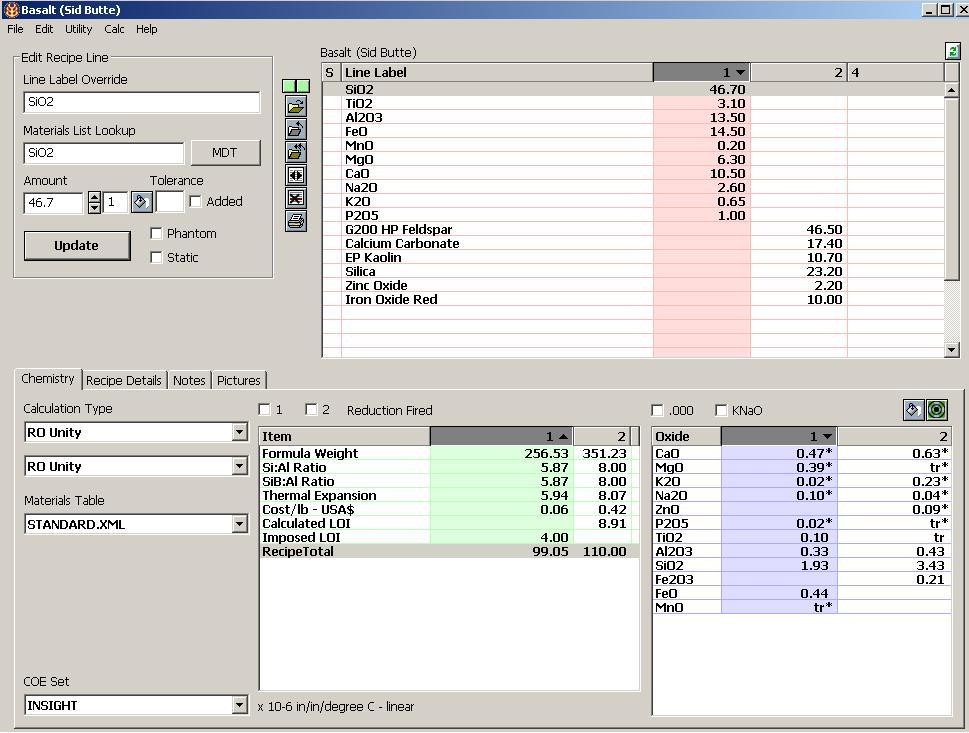 Insight Glaze Software profile for the basalt material, detailing its chemical composition and properties
Insight Glaze Software profile for the basalt material, detailing its chemical composition and properties
Future Directions: Expanding the Basalt Glaze Palette
Future research will focus on further experimentation with firing processes. Current projects include creating a series of wall tiles using identical clay and glaze but varying firing schedules to explore a spectrum of iridescent effects. Additionally, the basalt glaze material will be further modified by incorporating other oxides to develop entirely new glaze variations and broaden the ceramic color palette derived from basalt rock.
 Glaze sample made from 80% basalt material and 20% porcelain clay body, showing a different glaze texture and appearance
Glaze sample made from 80% basalt material and 20% porcelain clay body, showing a different glaze texture and appearance
Basalt rock, often overlooked as a common stone, holds immense potential for innovation in ceramic arts. This journey from quarry to kiln unveils just one facet of its versatility, demonstrating how geological materials can inspire and revolutionize creative practices. Explore more about the fascinating world of rocks and their applications at rockscapes.net.
